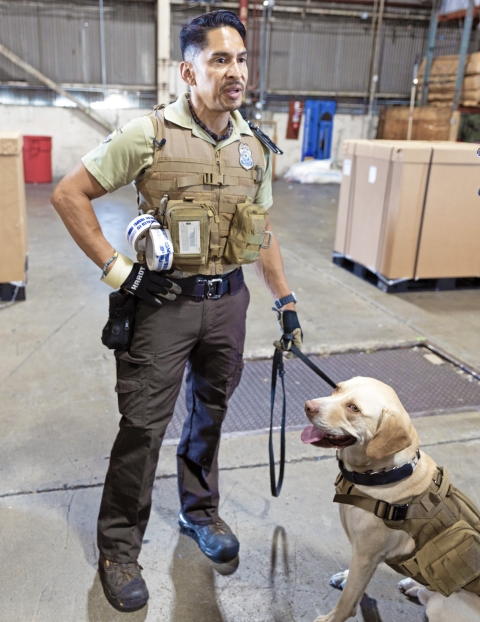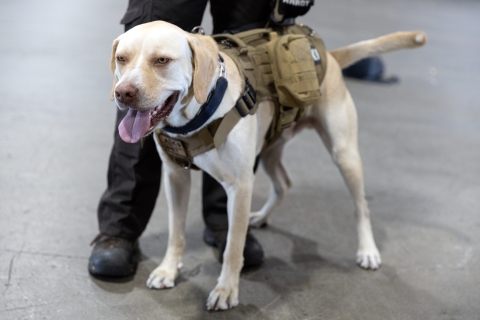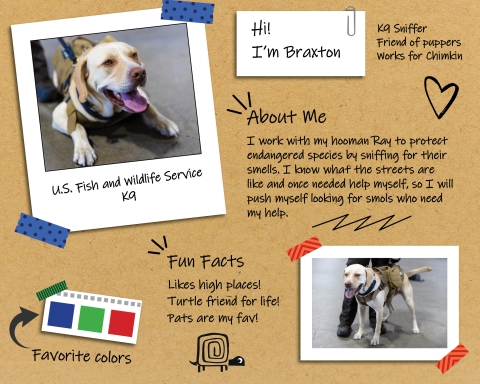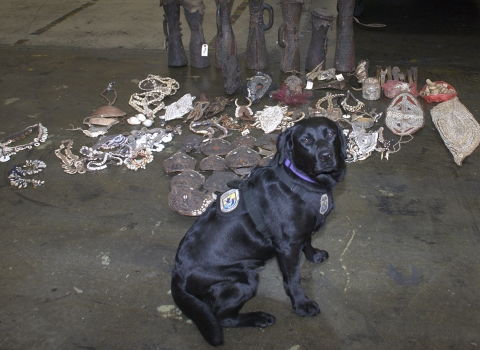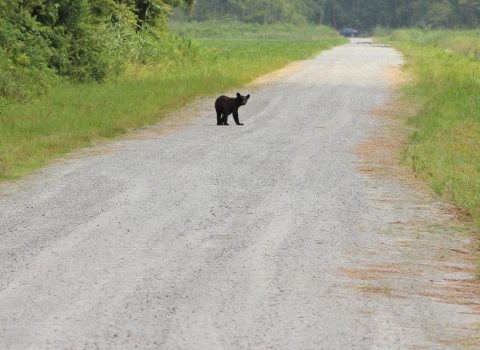Whether it is at seaports, the border, airports or warehouses, Ray Hernandez and his K-9 dog Braxton are protecting human health and safety, and against the exploitation of illegal wildlife and endangered species daily.
“We’re often the last line of defense for endangered species,” said Hernandez, a wildlife inspector and K-9 handler with the U.S. Fish and Wildlife Service, Office of Law Enforcement in Southern California.“It would take me a year by myself to go through a warehouse (to find illegal endangered species being smuggled), but with Braxton we can complete the process in 15-30 minutes.
“With one sniff, he can tell me if there is something of interest in a parcel.He simplifies everything – makes my job so much easier.”
Coming from an animal shelter program through the Department of Agriculture, Braxton’s “second chance” involves using his trained scent to find illegal wildlife including endangered species (using the Convention of International Trade in Endangered Species as a guide) being imported or exported in and out of the country in Southern California.Dogs that are rescued are put through a series of tests to ensure they are fit mentally and physically to be selected as K-9s. Once selected, they are trained at the USDA National Detector Dog Training Center in Newnan, Georgia to find five items: seahorse, sea turtle, python skin, rhino horn and elephant ivory (“high-ticket items that are critical to protect”). They are then more regionally trained from there, with Braxton specializing in sea cucumber, totoaba fish bladder, taxidermy trophies, etc.
He’s probably the most athletic of the dogs I’ve had,” said Hernandez, who had two other K-9s previous to Braxton. “He’s relentless in trying to show me he’s found something, even willing to go to the second level of shelves on top of a crate to pinpoint an item and pick it up in his mouth.”
Hernandez is fond of all three of his K-9s. Lockett was his first, an English lab who is short and stubby, but with an “amazing nose” who has since retired. His second K-9 was Colt who has also retired and now Braxton. All three dogs live with Hernandez and his family and “get along perfectly.”
“I think the bond between the dog and their handler is so important,” said Hernandez.“Having the dog live with you makes the working relationship that much stronger. They have a routine – know when to play at home and relax with the family and when to be serious at work.Some think Braxton is intimidating, but he’s just the sweetest – wouldn’t hurt a fly. Will curl up with you like a cat.”
At work it is all business as Braxton and Hernandez play a key role in ensuring illegal wildlife including endangered species and even invasive species invasive species
An invasive species is any plant or animal that has spread or been introduced into a new area where they are, or could, cause harm to the environment, economy, or human, animal, or plant health. Their unwelcome presence can destroy ecosystems and cost millions of dollars.
Learn more about invasive species are not imported or exported into the country. Additionally, health and safety are paramount. When Braxton finds parts of animal such as a “hacked off leg or the charcoaled rodent” as are typical of the job, per Hernandez they are able to ensure they turned over for testing for disease.
It isn’t always the endangered species either, as Hernandez has found mitten crabs in shipments which is an invasive species that could wreak havoc in waterways within the United States.
One particular success story Hernandez is most proud of is when he and Braxton intercepted a total of 100 plus native box turtles in multiple mail shipments over the course of a year, destined for Hong Kong. They were able to successfully transfer the turtles to a conservancy which through genetic research by multiple partner universities were able to repatriate them back in their original environment in the Midwest.
“That’s over 100 turtles being taken out of the gene pool,” Hernandez said.“They were nursed back to health and given a second chance.”
That second chance is what Hernandez takes the most pride in. That Braxton, once a stray dog who was given a “second chance” can then in turn give other species a “second chance.”


